
Sarah Tew/CNET
Wearable tech: it’s a buzzword. It’s a trend. It’s a swamp. Go to any store or browse any website and you’ll find fitness bands, smartwatches, and even the occasional smart glasses to buy. Which should you buy? Should you buy any at all?
2014 has been a hot mess of competitive products. Let’s make this easy and break it down in terms of smartwatches and fitness bands/watches.
For now, we’re skipping face-based wearables like Google Glass and Oculus Rift . And while action cameras like GoPro could be considered “wearable,” we have that category well covered elsewhere.
Editors’ note: This content was originally available at this location, which has since been updated with a more current version of our Wearable Tech Buying Guide.
First off, wait
Wearables can be useful in some cases, fun in others, but it’s a category that’s still largely superfluous and unnecessary. A lot of this has to do with a lack of killer apps, or hardware limitations, or functions that end up feeling a little redundant compared to what your phone can already do. Better gadgets will come in 2015, for both fitness tech and watches. The technology and the app landscape is at a point of transition. But, if you feel like you have to get one now, there are some decent options.
What to look for in a smartwatch or fitness band:
- Design: Does it actually appeal to you? This is a personal question.
- Phone support: You’ll need Bluetooth 4.0; also, your phone and OS need to be supported.
- Is it waterproof, or swim-friendly? Do you shower with your watch on?
- Battery life: Our baseline is an average of three days for a smartwatch, seven days average for a fitness band — but very few current products meet those expectations.
- What apps does it run? Pebble, Android Wear, and Samsung Gear all use different apps.
- Color screen, or black and white, or something else, or none at all? Some screens are always on.
- Can it recognize your voice, and can it act as a speakerphone? Do you want that?
- Is there a heart-rate monitor? How does it track fitness? Heart-rate monitors vary greatly, too.
- What apps and ecosystems is it compatible with? For fitness bands, this is a big deal.


Sarah Tew/CNET
The best smartwatches and fitness trackers right now
For an everyday, low-key smartwatch: Pebble
The Pebble Steel and Pebble Watch do the same thing: one is clad in steel with a leather band, and the other is all plastic. They get basic texts, emails, and other phone notifications, run a bunch of basic apps, are waterproof, and are affordable. And they work with both Android and iOS phones.
For entry-level fitness: Misfit Flash and Jawbone Up Move
Two extremely similar $50 puck-shaped cheap fitness trackers, these count steps, track individual activity sessions, automatically measure how long (and how well) you’ve slept, and can be worn in a wristband or a clip. They’re gateways to great apps and use replaceable watch-type batteries that last months. If you can find a Misfit Shine or Jawbone Up24 on sale for close to the same price, go for it: those respective step-up models are more polished pieces of hardware, but not worth full-on premium retail prices right now.
For runners: Garmin Forerunner 15
Running watches are the most polished part of the fitness-tech landscape right now. Garmin’s watch has GPS and enough useful features that you’ll actually use. Hardcore athletes may not get everything they need, but this is a good overall pick.
For early adopters of advanced tech: LG G Watch R or Moto 360
If you’re dead-set on getting an Android Wear watch and have an Android phone, these are the two best watches: they have cool round faces and look nice on a wrist. Android Wear software runs fine on both, and has been improving over time. Better watches will come next year, but these watches will be able to be updated to newer firmware. I’d still wait.


Sarah Tew/CNET
Know your smartwatches
Smartwatches are mostly accessories to your phone. They need the right type of phone to work with: some are Android-only, some iPhone-only. Some work with Android, iOS and even Windows. Some run their own apps. Some are waterproof. Some have color screens. Some can even take phone calls via speakerphone.
Know that everything we saw in 2014 — even the good ones — is really early. early stuff. Next year you’re likely to see better everything: better Android Wear watches, better smart fitness watches; devices with better battery life (I hope); better apps most certainly. And there will be the Apple Watch, too. No one has any idea how good Apple’s take on the smartwatch will be yet, but it’ll undoubtedly cast a huge influence the landscape.
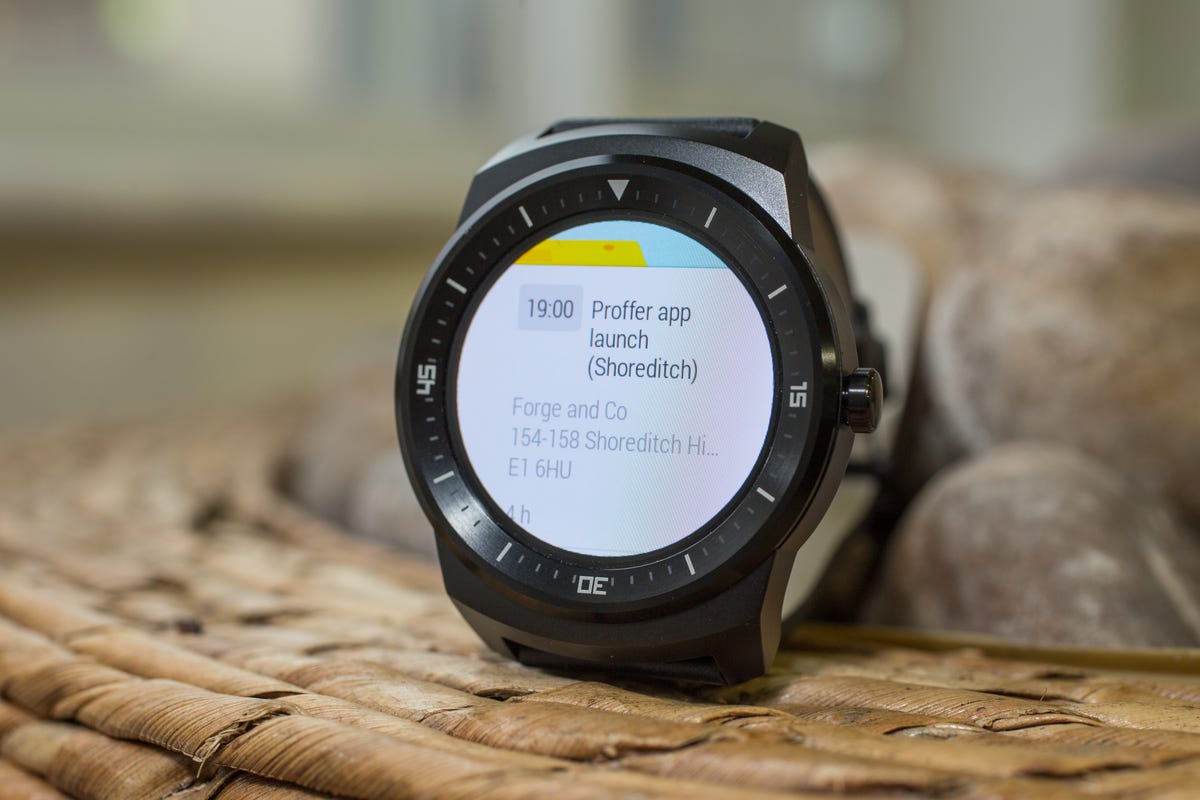

CNET
Android Wear (aka the Google watch)
LG G Watch , Samsung Gear Live , Moto 360 , LG G Watch R , Asus Zenwatch , Sony Smartwatch 3
Pros: Runs apps, recognizes voice commands, uses Google Now, tracks steps and sometimes heart rate. Cons: Works only with Android phones; can’t make voice calls; Google Now cards can sometimes pop up randomly.
Android Wear is the biggest and most ambitious wearable tech platform so far. Android Wear software runs similarly across a variety of watches. All Android Wear watches run the same apps, which load via an Android phone. You need Android OS version 4.3 or later, and a phone that has Bluetooth LE, or Bluetooth 4.0. (check your phone’s compatibility here). Android Wear watches won’t work with iPhones or Windows phones.
Android Wear watches either have round or square displays and a variety of designs: leather bands, metal bands, futuristic minimalist designs, are made of metal or plastic, and even a few that look like regular watches. They all have microphones but can use them only to recognize your voice to search Google, transcribe messages or initiate voice commands. Android Wear watches don’t have speakers and can’t act as speakerphones. None of them have cameras. They all currently have 4GB of onboard storage, which you can’t manage: it’s used to download apps or store music for playback on Bluetooth-connected headphones.
All Android Wear watches have color displays, too, which means you’ll need to lift or tap them to tell the time, or set them to “ambient” mode for an always-on dimmed display that drains battery life. Speaking of battery life, expect about two days on a single charge — give or take a day based on your settings.
There are a lot of apps available, which install automatically to your watch when the Android app is downloaded to your phone. This “cross-load” strategy means more seamless app-to-phone handoffs, but quite a few things you do on Android Wear require you to open your phone to see the rest — like Web pages found by Google search, for instance.
Some Android Wear watches have heart rate monitors. All of them have pedometers and sync with Google Fit, a fitness-tracking phone app. Google Now, Google’s predictive card-based notification system, is the main service that runs on Android Wear, serving up cards for driving directions, weather, and whatever else you may have searched for recently. These cards can get repetitive and aren’t always useful. But Android Wear has a lot of promise, and all Android Wear watches can be updated to new firmware as it’s available…which means new features. Newer watches, like the Sony Smartwatch 3, also have features like GPS for run-tracking away from a phone. For the most part, however, Android Wear is meant to stay paired to your phone.
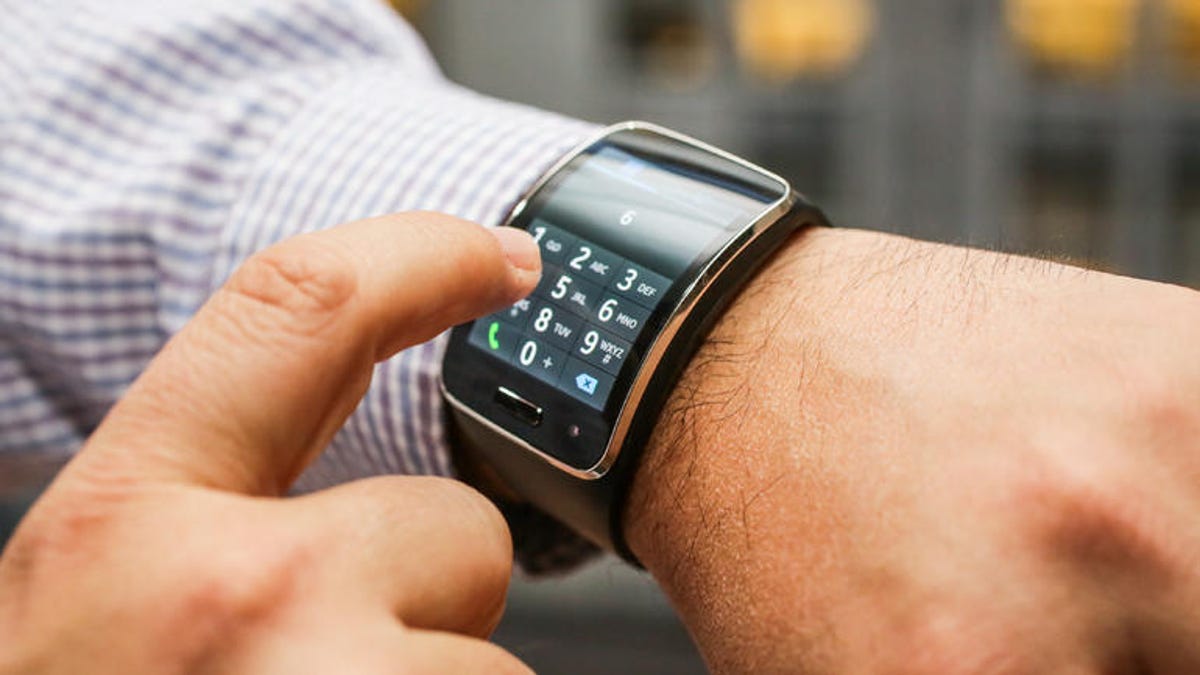

CNET
Samsung Gear watches
Galaxy Gear , Gear 2 , Gear 2 Neo , Gear Fit , Gear S
Pros: Runs apps, track steps and heart rate, makes voice calls (for most models). Cons: Works only with Samsung phones; Gear app library isn’t great.
Samsung Gear watches work only with Samsung phones, a more limited subset than Android Wear allows. Studded with features and custom pre-installed apps, the Galaxy Gear, Gear 2, Gear 2 Neo and recent Gear S can all be used as speakerphones to make calls. Android Wear watches can’t do this. Some people love having that hands-free call-on-your-wrist feature.
The Gear S can even be a stand-alone smartphone and has its own SIM card slot, but paying for that extra line in a family plan won’t be for everyone.
Samsung Gear watches (except for the Gear Fit, which is a smart fitness band) run their own Gear apps, which are downloaded from a Samsung Gear app store via an app on your phone. Many of these apps cost a dollar or more. Some are free. Gear watches run Tizen, Samsung’s own operating system. There aren’t as many great brand-name apps on the Gear as there are on Android Wear or even Pebble.
Samsung’s watches do have unique baked-in hardware advantages: the Gear 2 and Galaxy Gear have their own cameras, some also can take voice memos, and most can also record heart rate. But there have been five Gear watches in just a year, and more are almost guaranteed sometime next spring. If you really want a Samsung watch, you should wait. And there’s always the possibility that Samsung might produce more Android Wear watches, too, like the Gear Live.
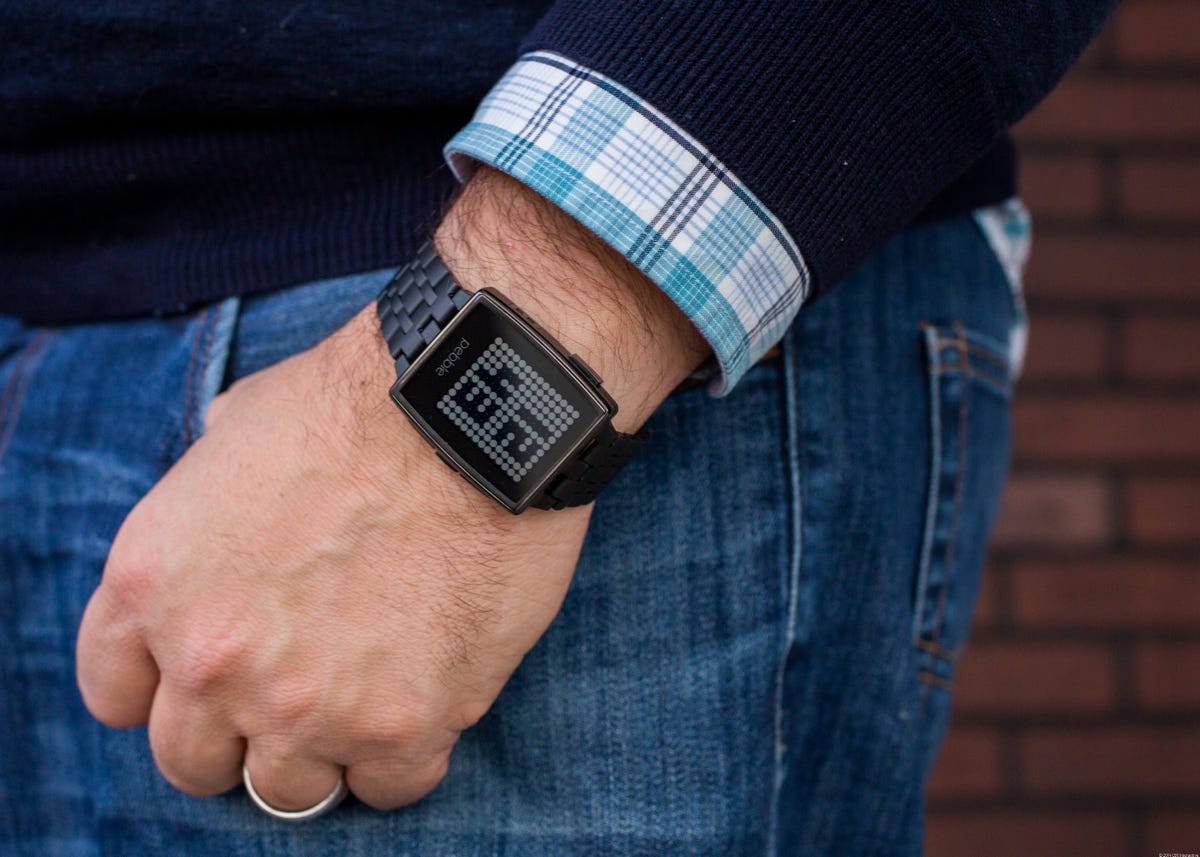

Sarah Tew/CNET
Cross-platform, affordable smartwatches
Pebble Steel , Meta M1 , Martian Notifier , many others
Lots of indie companies make smartwatches too, and what they do varies greatly. The best of these are affordable, waterproof (or highly water-resistant), have longer battery life, can get basic notifications from your phone, and even run a few apps. And, many run on both Android and iOS — or, even Windows Phone. The Pebble is the best representative of this: to many people, it’s probably a better smartwatch than any other because of its simplicity and longer battery. It lacks a touchscreen, can hold only eight apps at a time, and generally feels a lot lower-tech than an Apple Watch, Android Wear watch or Samsung Gear, but its simplicity makes it really easy to use on a daily basis, and it works better as a simple one-glance device.
The Pebble’s battery life is better than average, just like the Meta M1 and Martian Notifier, but none of these have a battery that lasts beyond a week. Some watches are emerging that have e-ink displays or built-in replaceable batteries that last even longer. Expect more everyday fashion watches to start including smart features, and even some that border on smart jewelry. These types of watches are bound to evolve into the “regular watches, just slightly smarter” category.
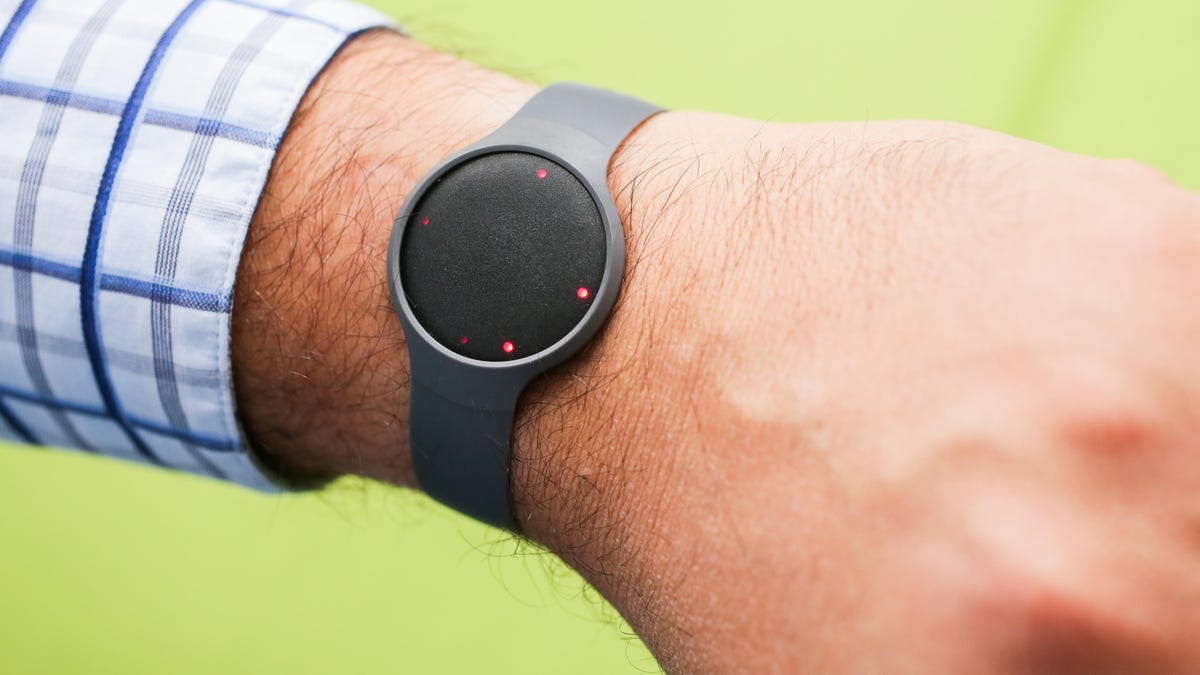

Sarah Tew/CNET
Fitness bands: Go cheap or wait
I’ve gotten a lot of people asking what band to buy. The biggest movers and shakers, Fitbit and Jawbone, are midway through a product refresh. Not only that, but both are making the move to add heart-rate tracking using different technologies. The Jawbone Up3 is coming by the end of the year in the US, while the Fitbit Charge HR will arrive early next year.
There are a few hold-the-fort cheap trackers: the Misfit Flash and Jawbone Move are $50; they track steps and sleep, and even tell the time and show daily progress at the push of a button. Both sync with well-supported fitness apps. The Jawbone Up app is better, but the Misfit Flash has better hardware and is waterproof, too. Your phone might already track steps and do a fine job of it. These stand-alone trackers help achieve more of a 24/7 experience, in case your phone’s not on you during the day or at home.
For fitness, it’s all about the apps
Good hardware is always a plus, but great software really makes the difference for long-term fitness tracking. One of our favorites is Jawbone Up: its comprehensive activity, food-tracking, sleep-tracking, weight-tracking and life-coaching package is incredibly rich and pretty easy to use. Best of all, you can start using it without any fitness band at all: log activity and sleep and calorie tracking, connect other third-party apps, or even use certain phones with the app to track steps when you’ve forgotten to wear your band.
Some fitness bands are better than others at sending out data to other apps and services. If all your steps and fitness data are locked up in app that can’t transfer to another, it could get really frustrating. Then again, maybe you want your step data confined in a single, tidy place.
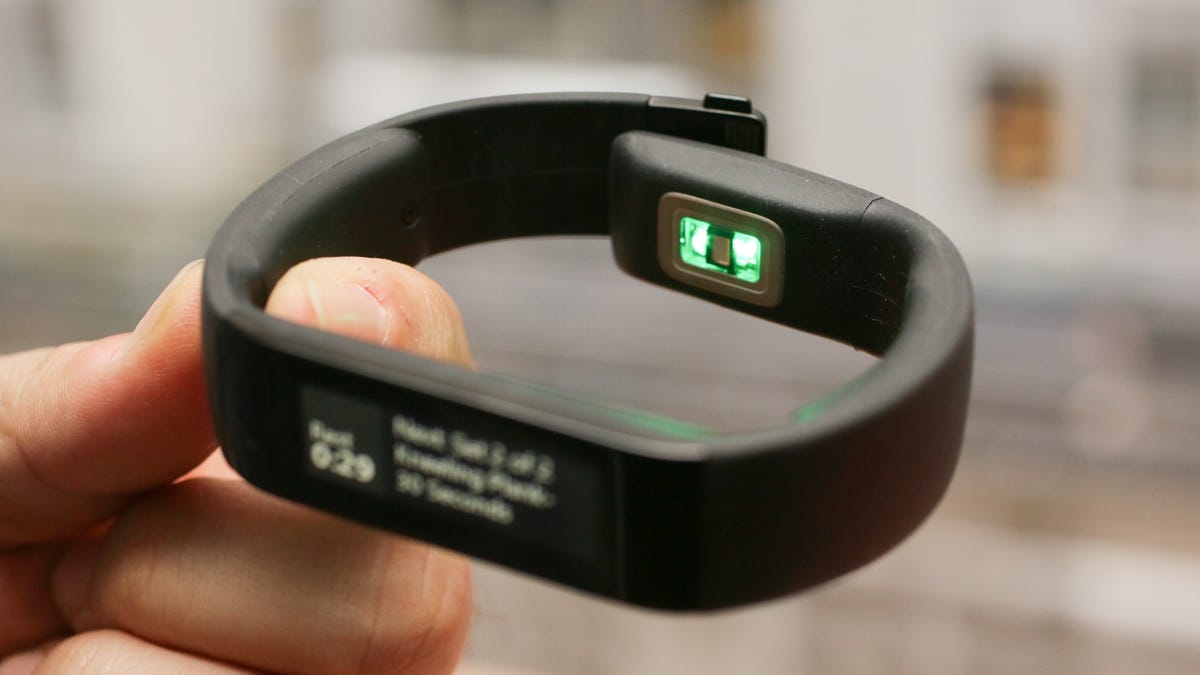

Sarah Tew/CNET
Heart rate: Half-baked (for now)
This is fitness tech in a nutshell: everyone is striving to add heart-rate tracking, but the technology, reliability and use cases vary greatly. Some track heart rate by pairing with a compatible old-fashioned (but far more accurate) conductive chest strap, like the Polar Loop and Garmin Vivofit . Some track heart rate on the wrist using optical sensors: for instance, the older, flawed Samsung Gear Fit or many recent smartwatches like the Samsung Gear S or Moto 360. Others track heart rate all day long, 24/7, like the Microsoft Band and Basis Peak , the two best heart-rate picks of the moment. The Jawbone Up3 will use a different bio-impedance technology for heart-rate tracking, and also track all day. The Fitbit Charge HR and Surge could also be decent, and also do 24-hour tracking.
You could grab one of these trackers and experiment, but you’re better off waiting to see which one is the best when the dust settles. The Basis Peak does a fine but still not overly impressive job of on-wrist heart-rate tracking, and also automatically tracks sleep. The Microsoft Band does a decent job, too, and can be used as a GPS-connected device for running, too. But these bands still have inaccuracies, sometimes have problems locking into heart rate, and most importantly, what heart rate even “means” is up for debate from gadget to gadget and app to app. Some measure “active” exercise; some track resting heart rate as a base measure of health. Not many take into account one’s everyday heart rate and use it to adjust target heart-rate zones.
Most importantly, none of these wrist trackers are medically approved. They’re for recreational/”wellness” use only. If you really want to know your actual heart rate, get a conductive chest strap and pair it with a device that supports it.
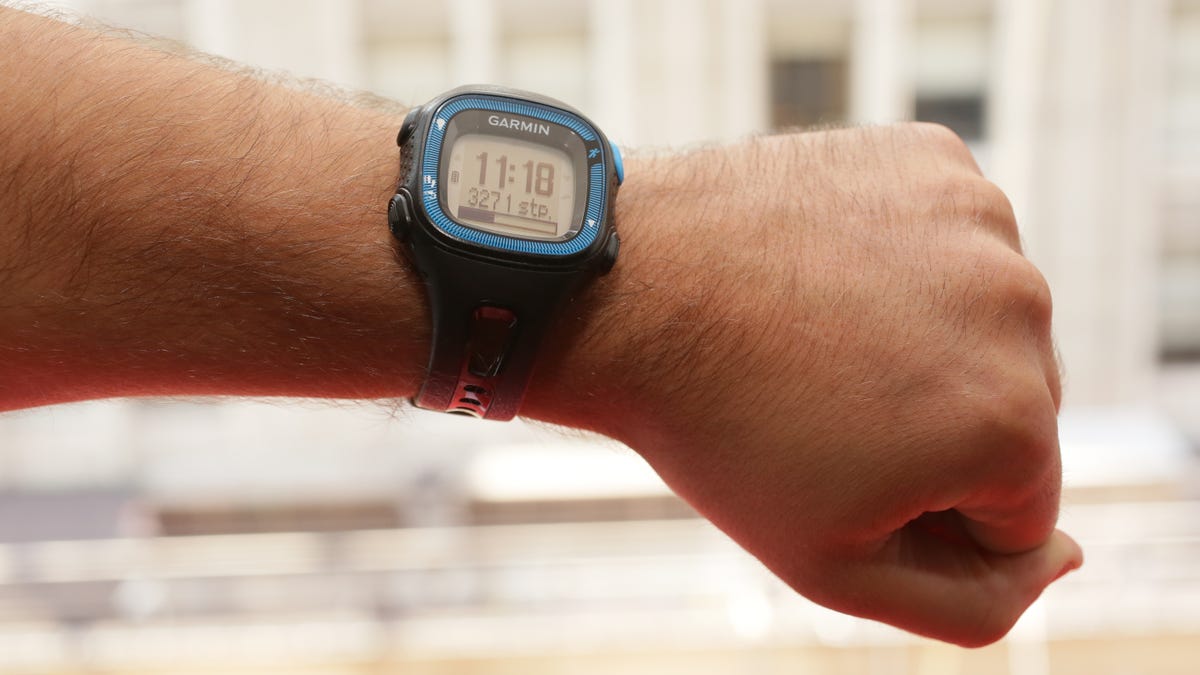

Sarah Tew/CNET
GPS running watches vs. ‘fitness bands’
If you’re a dedicated runner or jogger, getting a watch that has stand-alone GPS could be a big help for mapping and tracking workouts. The Garmin Forerunner 15 is one of our favorites right now: it uses GPS and also supports chest-strap heart-rate monitors using ANT+ (not Bluetooth) connection technology. For the best, most “serious” workout and health tracking for runners, this is still the way to go.
Some fitness bands and smartwatches also have built-in GPS, which means they map your run automatically and often mark how you performed along the way: the Microsoft Band, Samsung Gear S (which requires a connected phone/data plan), and the Timex Ironman One GPS+ are recent examples. But, again, a specialized device like Garmin’s is the best bet versus a smart fitness band or smartwatch.
Running watches are a little more polished and functional right now than catch-all heart-rate-tracking fitness bands, and are a better bet — if you feel like you’re a runner who could use GPS tracking.


James Martin/CNET
Conclusion: What to expect in 2015 and beyond
2015, for better or worse, will be about the Apple Watch : how it succeeds or fails, how other competitors hold off their products or improve them to compete, and how app developers choose to support it.
Killer smartwatch apps should finally begin to emerge: or, at least, a whole lot of apps that try. Between Apple Watch, Android Wear and Samsung’s Gear platforms — and outliers like Pebble — there will be lots of competition. In the end, expect Apple and Google to be where the real app battle happens…again.
It’ll be good news for smartwatches in general, because it’s likely to mean more cross-platform apps, even if the watches themselves don’t work with all phones.
Smart home, cars, and everywhere else: expect a lot of places and things to start interfacing with these watches next year, too, via watch apps. There could be ways to pay, control your house and appliance, or even control your car. Wearable app partnerships and initiatives could end up being announced everywhere. It could get confusing.
Fitness bands will keep incorporating heart rate: Fitbit, Jawbone and many others. But expect a lot of companies to keep polishing and improving how heart rate works. Other sensors could emerge, too: Samsung’s Simband, a reference prototype, hints at many more health sensors that could be coming to fitness bands sooner rather than later.
Expect smartwatches and fitness bands to improve, but also to flood the market: prices on this year’s tech will inevitably drop. What you’ll be able to buy at the end of 2015 should be a lot better, and I bet a lot less expensive.



